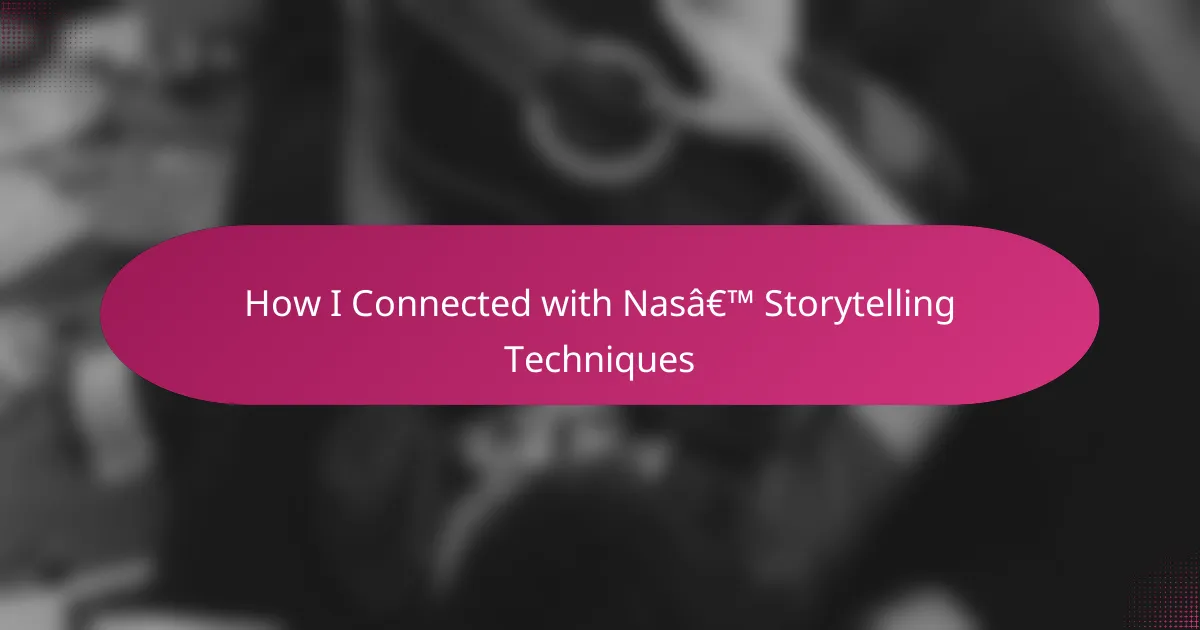Key takeaways
- Storytelling in rap is about emotional authenticity, creating a deep connection with listeners through personal narratives.
- Nas’ storytelling style features vivid imagery, emotional depth, and the seamless blending of social themes with personal experiences.
- Effective techniques for rap storytelling include focusing on sensory details, embracing vulnerability, and crafting a clear narrative arc.
- Listening to and reflecting on Nas’ lyrics can inspire personal growth and self-reflection in listeners.
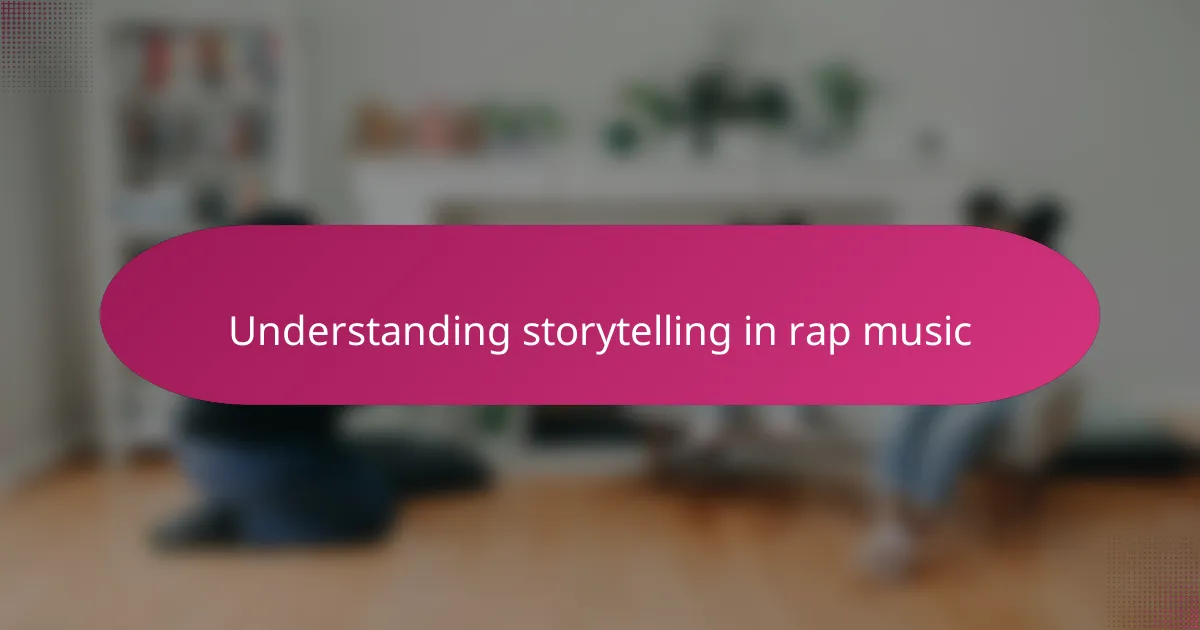
Understanding Storytelling in Rap Music
Storytelling in rap isn’t just about rhymes; it’s about painting vivid pictures with words. I’ve always been drawn to how rappers transform everyday struggles into compelling narratives that resonate deeply. Have you ever noticed how a single verse can transport you to a moment in someone’s life, making their experience feel almost your own?
What makes storytelling in rap unique is its raw honesty. Unlike traditional storytelling, rap often comes from a place of personal truth and vulnerability. I remember the first time a song made me pause and reflect on my own life—I realized storytelling wasn’t only about entertainment, but also about connection and understanding.
This emotional authenticity challenges listeners to empathize with experiences vastly different from their own. Isn’t it fascinating how a rapper’s tale from a harsh neighborhood or a difficult upbringing can spark hope or awareness in someone miles away? That’s the power of storytelling in rap—it bridges gaps and creates shared human experiences through rhythm and rhyme.
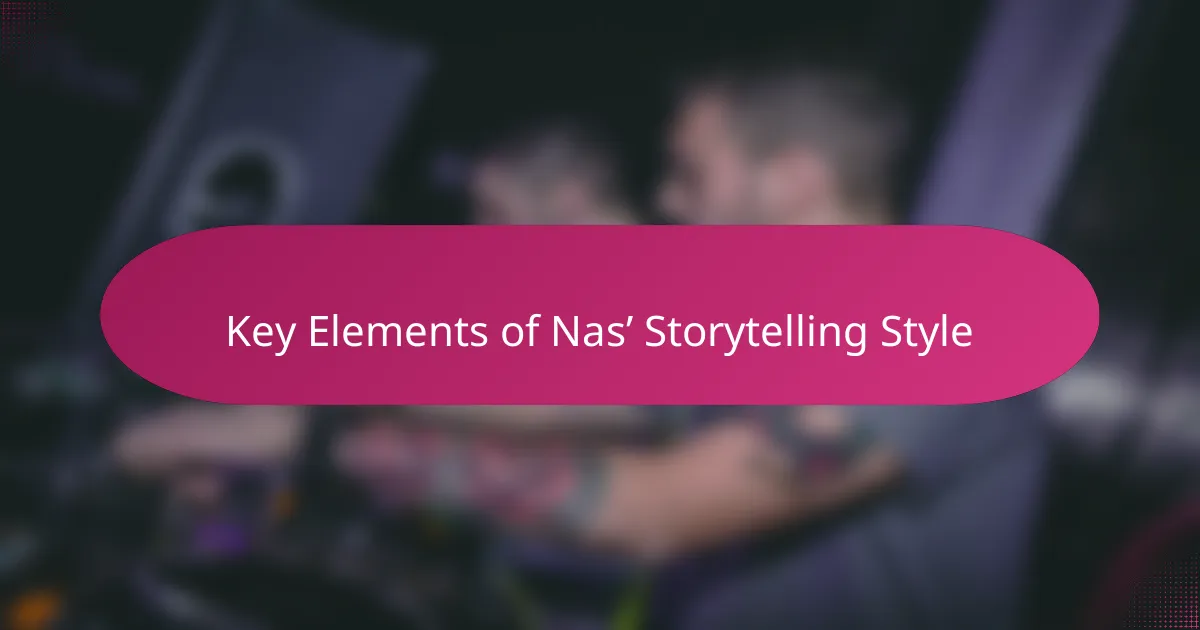
Key Elements of Nas’ Storytelling Style
One of the first things that struck me about Nas’ storytelling is his incredible attention to detail. He doesn’t just tell you what happened; he paints the scene so vividly that you can almost see the cracked sidewalks and hear the distant sirens. Have you ever listened to a song where the setting feels so real, you end up picturing it in your mind long after the track ends? That’s exactly what Nas does, and it’s something I find truly captivating.
Another element that defines Nas’ style is the emotional depth he brings to his stories. His verses often reveal raw, unfiltered feelings—whether it’s hope, regret, or pride—that make the listener feel like they’re stepping into his shoes. When I first heard him describe the struggles of growing up in Queensbridge, I felt a mix of empathy and admiration; it was like getting a glimpse into a world I never knew, but suddenly understood more deeply.
What really sets Nas apart, though, is his ability to weave complex social and personal themes seamlessly into his narrative flow. He challenges listeners to think critically without ever sounding preachy, blending wisdom with street poetry. Isn’t that kind of storytelling rare in rap? It’s this mastery that not only tells a story but also sparks reflection, and that’s what drew me in from the very start.
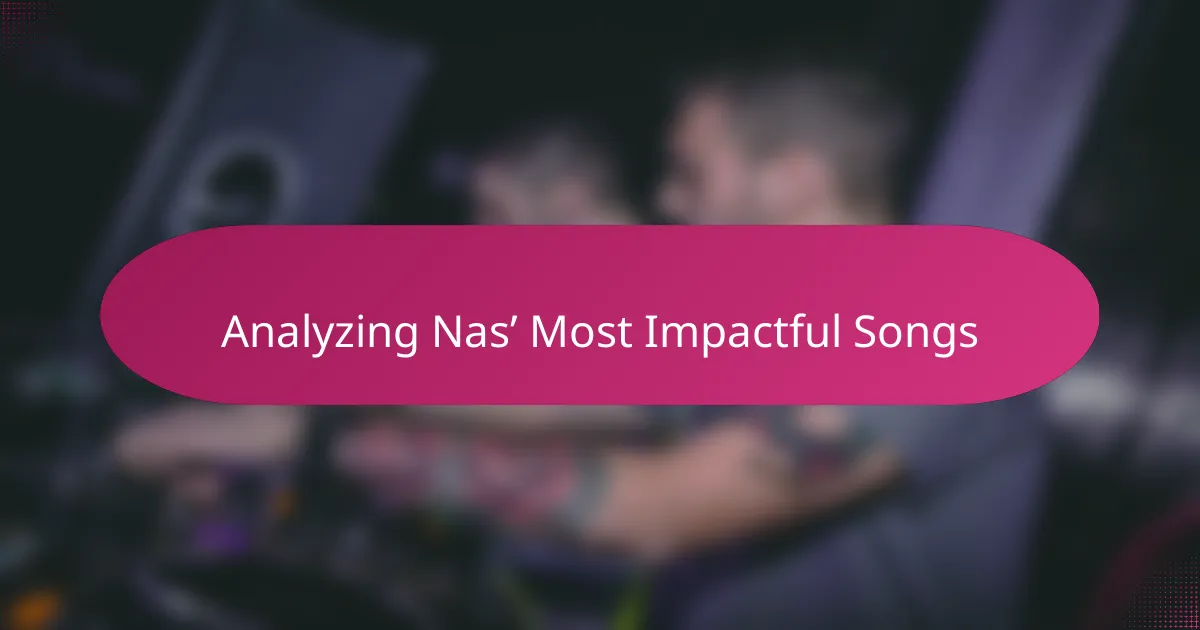
Analyzing Nas’ Most Impactful Songs
When I dive into Nas’ most impactful songs like “The World Is Yours” or “One Love,” what hits me first is how each lyric feels like a letter from the past, rich with lessons and memories. Have you ever heard a track that makes you want to rewind just to catch every nuance? That’s Nas inviting you into his world, where every detail is deliberate and loaded with meaning.
I remember listening to “N.Y. State of Mind” late one night, and it struck me how Nas doesn’t just narrate events—he plunges you into a gritty, urban reality that feels both raw and poetic. His words gave me a window into Queensbridge’s harsh streets, yet there was something almost cinematic about the way he told his story. That balance between harsh truth and lyrical beauty is something I constantly admire.
What I find most compelling is how Nas turns personal pain and societal struggles into universal reflections. Songs like “Dance” show a rare vulnerability, mixing hope and loss in a way that feels deeply human. Doesn’t that remind you why music can be such a powerful storyteller? For me, Nas’ songs aren’t just music—they’re life lessons wrapped in art.
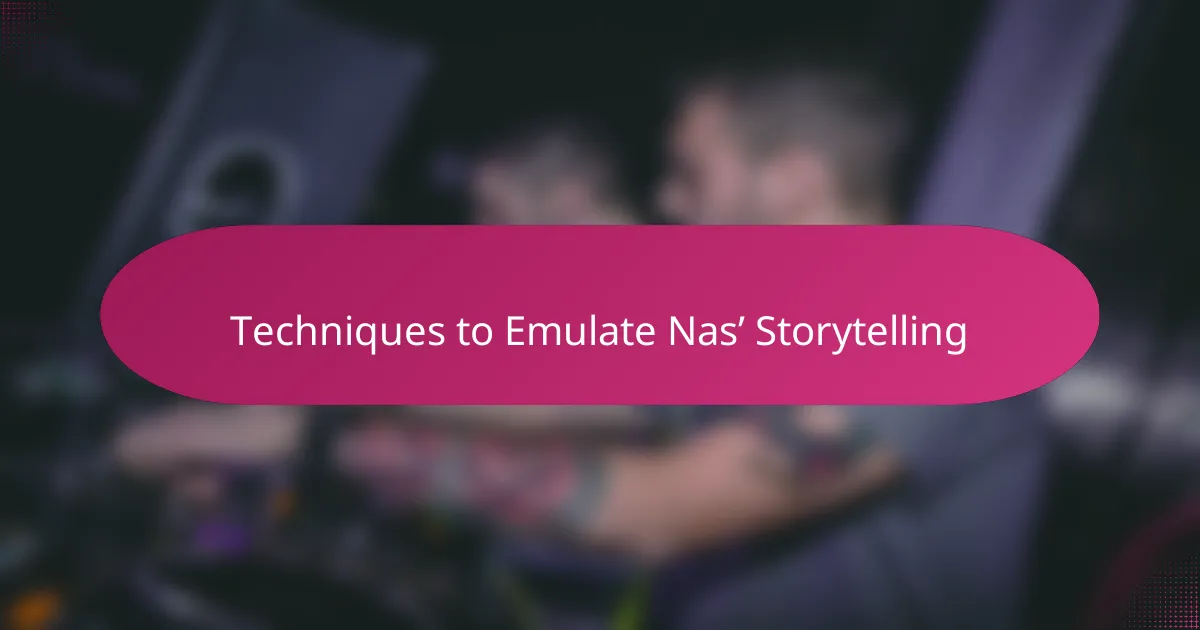
Techniques to Emulate Nas’ Storytelling
One technique I’ve tried to adopt from Nas is his knack for painting detailed scenes that pull the listener right into the story. I found that slowing down and focusing on the small, sensory details—like the sounds, smells, and textures—makes my own verses feel more immersive. Have you ever noticed how such details can turn a simple story into something unforgettable?
Another approach I admire is the emotional honesty Nas brings to his lyrics. I realized that being vulnerable, even if it feels risky, creates a powerful connection with the audience. When I started opening up about my own experiences, my storytelling suddenly felt more genuine, and listeners responded in ways I hadn’t expected.
What really challenges me is how Nas balances deep social themes with personal stories without sounding like a lecture. I try to weave life lessons naturally into the narrative, letting them emerge through the characters and situations rather than spelling everything out. Isn’t that the secret to keeping a story compelling while still making it meaningful?
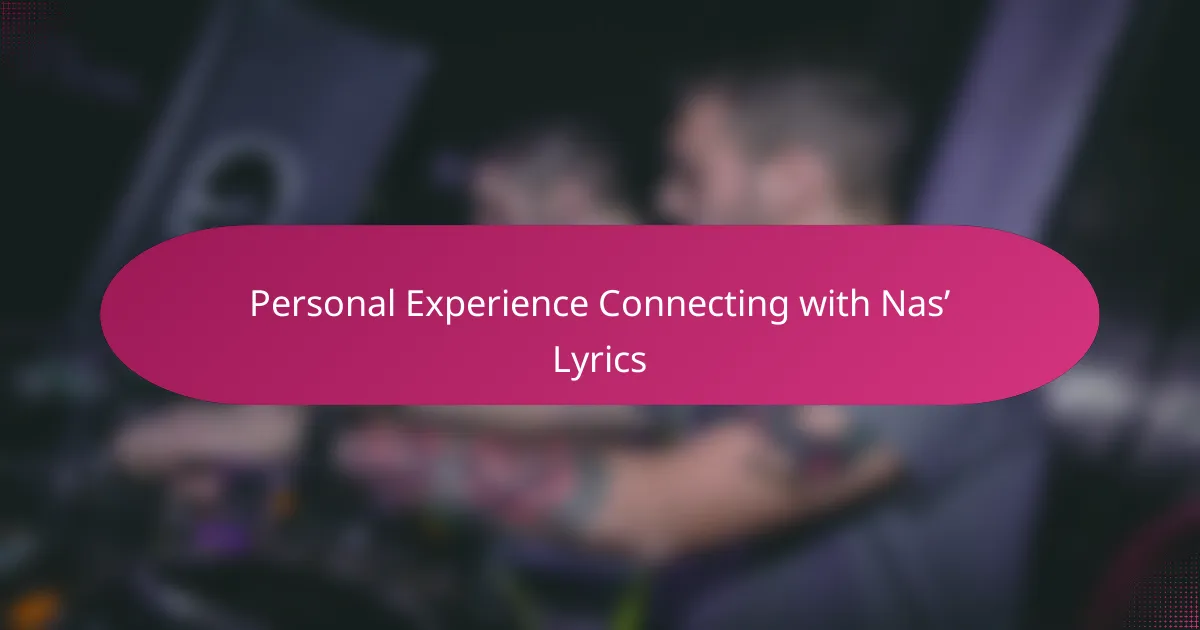
Personal Experience Connecting with Nas’ Lyrics
Nas’ lyrics felt like a mirror reflecting parts of my own life I hadn’t fully confronted. When I first heard him rap about the struggles of growing up in Queensbridge, it stirred something inside me—a mix of recognition and a desire to understand my own challenges more deeply. Have you ever experienced music that feels like it’s speaking directly to your soul? That’s exactly what happened to me with Nas.
There was a moment when I was going through a difficult time, and revisiting Nas’ storytelling gave me a sense of solidarity. His vivid descriptions and raw emotions reminded me that pain and growth are universal, not just personal battles. It made me feel less isolated, as if I was connecting with someone who genuinely understood the complexities of life’s hardships.
What’s powerful about Nas’ lyrics is how they invite you to see the world through his eyes, yet they also encourage self-reflection. I found myself questioning my own perspectives and biases, inspired by how he balances personal vulnerability with broader social commentary. Isn’t it amazing how a few carefully chosen words can shift the way you think about your own story? That’s the kind of connection I cherish most when listening to Nas.
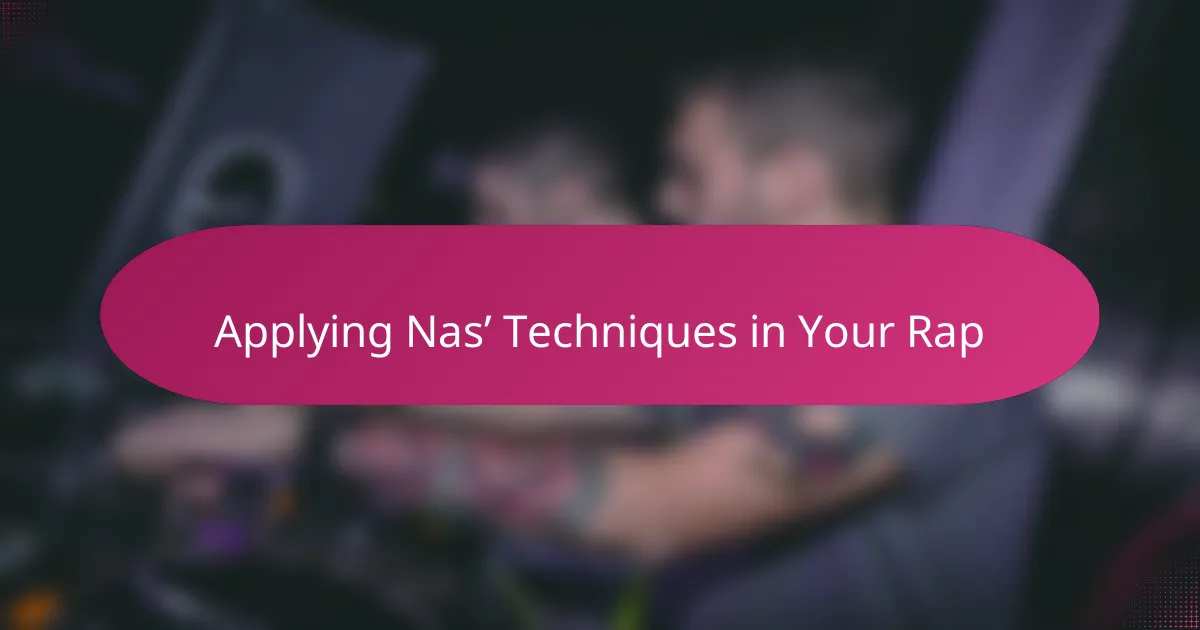
Applying Nas’ Techniques in Your Rap
Applying Nas’ techniques in your rap starts with slowing down and really zoning in on the little details. I remember trying this myself—describing not just what happened, but what I saw, smelled, and heard—and suddenly the scenes my verses painted felt more alive. Have you ever noticed how a tiny detail can make a story stick with you long after the song ends?
Embracing vulnerability was another shift for me. Nas isn’t afraid to expose his emotions, and when I began sharing my own struggles honestly, I saw how much it resonated with listeners. It made me realize that raw emotion doesn’t weaken a song, it strengthens the connection you build with your audience.
The hardest part, though, was weaving in bigger social ideas without sounding like I was lecturing. Nas does this so effortlessly by letting his stories carry the message naturally. I started practicing this by letting my characters and their situations reveal the themes, rather than stating them outright. Isn’t that the trick to keeping people hooked while still making them think?
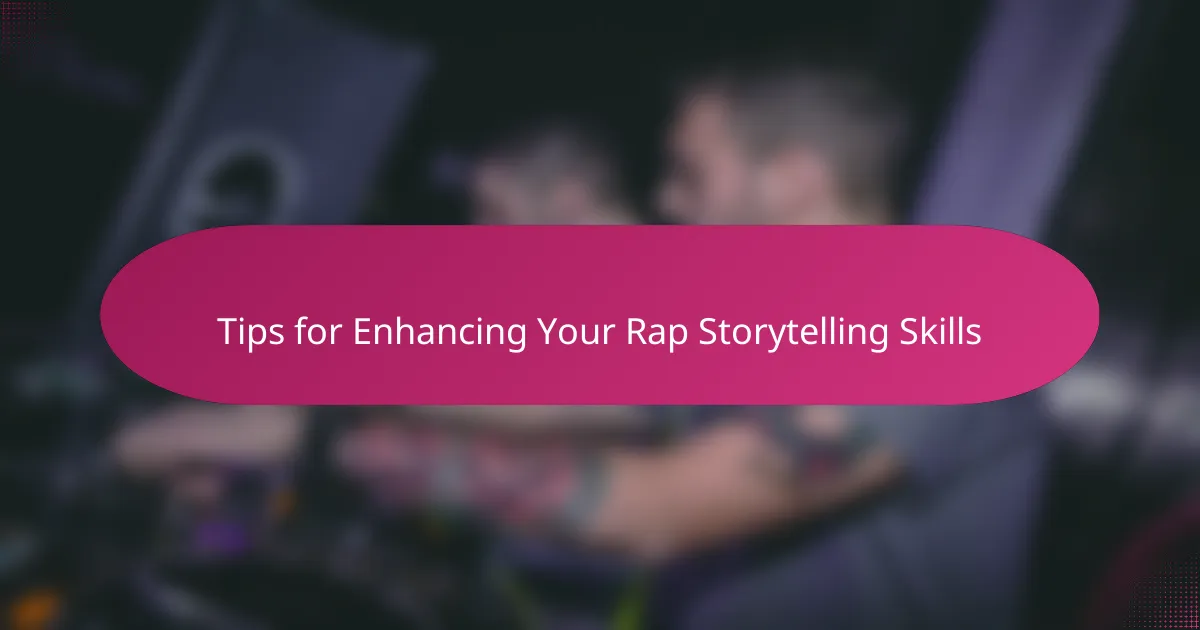
Tips for Enhancing Your Rap Storytelling Skills
One tip that really changed how I approach rap storytelling is to live the story before writing it down. I ask myself, what emotions did I actually feel in that moment? When I started tapping into those genuine feelings, my lyrics stopped sounding like generic lines and started becoming personal narratives that listeners could feel too. Have you tried to recall not just events but the emotions tied to them? That little shift makes a huge difference.
Another technique I embrace is experimenting with pacing. Nas often slows down his flow during critical moments, giving the story room to breathe. I practiced this by pausing on key phrases or stretching out descriptions, and I noticed how much more vivid my stories became. Isn’t it surprising how a simple change in rhythm can deepen the impact of your tale?
Lastly, I focus on creating a strong narrative arc—beginning, middle, and end—even in just a few bars. Early on, I used to jump between ideas without connecting them, but studying Nas taught me the power of a clear progression. When I apply this, my listeners follow my verses effortlessly and stay engaged from start to finish. How often do you think about story structure in your rhymes? It might just be the storytelling game-changer you need.
